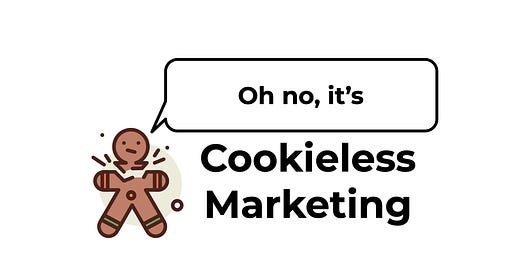
Cookieless Marketing: How It Affects Your Business
Find out how cookieless marketing affects your business
What is Cookieless Marketing
It’s a marketing approach to acquire new customers without exposing their browser usage to ad networks. It’s actually one of principles of a wider concept – privacy-first marketing.
The web browsers have set the new trend to block third-party cookies.
Remember:
Cookies are a technology for websites to remember your actions like signing into your account. When you clear cookies, you erase that action.
A first-party cookie is a storage memory hosted by the website.
A third-party cookie is hosted by the website partners like ad networks.
Cookies play an important role in attributing the source of a customer and their page behavior.
Why Cookieless Marketing is important
Ad networks can track users history, so long as users visit websites with cookies set by these networks. For example, Google Ads is an ad network business. To thrive, it needs to provide evidence of its performance to the business clients. For its search ads, reporting is pretty straightforward. But when it comes to display ads, things get tricky.
Website publishers need to use Google’s cookies in order for Google to correctly monitor the ad impressions. When a user visits websites where both of them have Google’s cookie, Google can stitch these website visits into one browser session, effectively recording the user’s history – but as long as the user visits websites with Google’s cookies.
It’s also common for ad networks to exchange data. Like when G2 collects its visitors’ cookies with a LinkedIn tag and sells it as a “LinkedIn audience” for you to target.
What Cookieless Marketing is Going to Change for Businesses
If you’re in the ad network business, you need to figure out new ways to track users across your publishers.
If you’re any other business, there are two main concerns: retargeting and unattributed traffic.
Retargeting is when you collect the audience of people who have visited your website, and you wish to show them ads on other websites. In this case, ad networks will have a hard time tracking this audience.
You may end up with more share of the direct traffic while your retargeting campaigns are live. That can happen when a user clicks on the banner ad, visits your website, and then comes back by typing the address directly. Without the third-party cookies to stitch those sessions, that user is attributed as “direct”.
I used to think that it would also impact traffic monitoring, like when you set up Google Analytics or HubSpot. But turns out, their tags actually instruct your domain to host your own cookies, making them first-party cookies.
Cookies are but one aspect of privacy-first marketing. There are still issues like UTM tag stripping and hiding IP addresses, so in the long run, you will need a technical solution like server-side tagging.
Cookieless Marketing Best Practices
Enact the demand gen attribution
Filter your direct leads by your branded landing pages: homepage, about, contact page.
Filter your search leads the same way and combine them with the direct leads above.
Run correlation analysis between your brand awareness campaigns and the count of demand gen leads.
If the connection is strong, run a regression analysis to figure out how many expenses are needed to generate one demand-gen lead.
Implement server-side tagging
Set up a cloud server like Google Cloud.
Create a new server-side container in your Google Tag Manager account.
In the container, configure tags for analytics services like GA or Facebook Pixel.
Link your website to the server-side container using the server URL from a cloud server.
Publish and test via the preview mode.
Experiment with contextual targeting
As ad networks will slowly phase out from cookie retargeting, it’s high time to test brand awareness ads based on topics alone. And if remarketing to an unconverted audience is that important to you, just turn them into a blog subscriber with lead magnets and send the personalized emails from there.
Got something to add? Just









